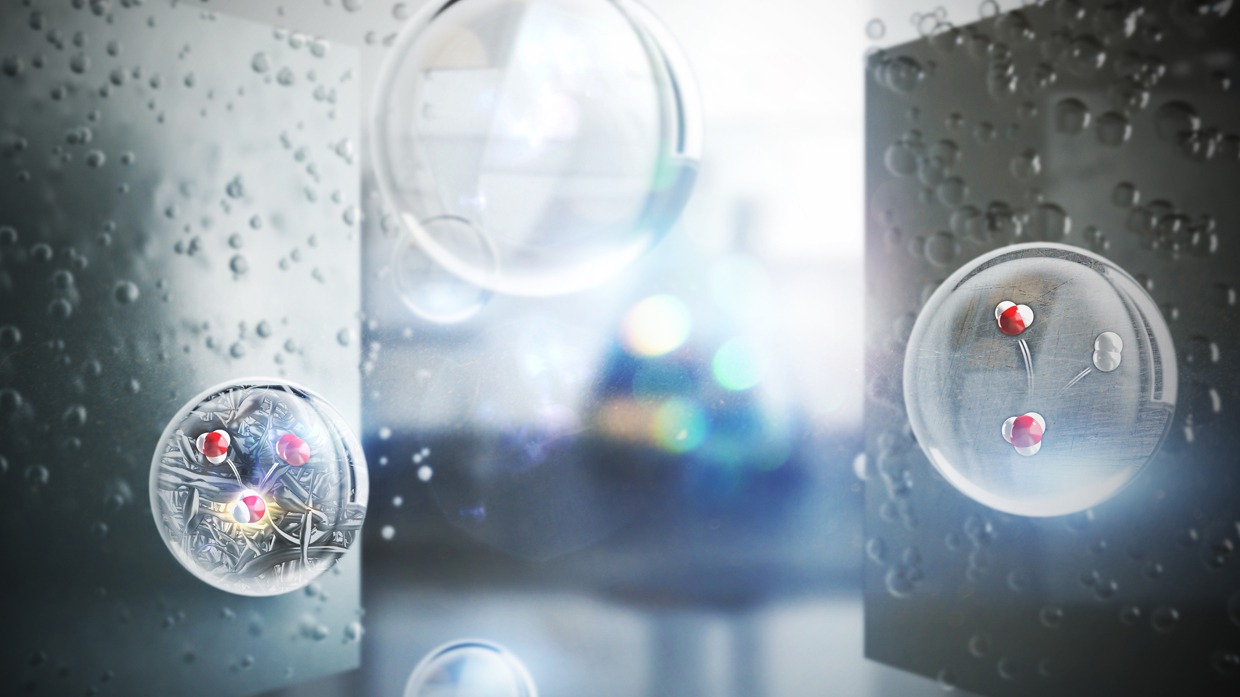May 25th, 2016
Using solar energy to make a versatile fuel is a strong wish from society. Photo-electrochemical water splitting is one possible approach, but efficiencies are still too low and the material degradation too high. Xueqing Zhang and Anja Bieberle want to identify the limiting processes at the interface and boost performance. In the journal ChemSusChem, they review modeling and simulation methods and approaches in the field of photo-electrochemical water splitting.
Modeling & Simulations in Photoelectrochemical Water Oxidation: From Single Level to Multi-scale Modeling
Dr. Xueqing Zhang and Dr. Anja Bieberle-Hütter, ChemSusChem 2016, 9, 1223-1242, doi 10.1002/cssc.201600214

to split water into oxygen and hydrogen
Modeling and simulating a photo-electrochemical interface is challenging - there are many processes occurring simultaneously, competing with or reinforcing each other, and spanning a large range of time and length scales. Modeling and simulations are a feasible, economic, and efficient tool for tackling this task. In this paper, Zhang and Bieberle find that current modeling and simulation efforts do not consider the whole process under operation. The limiting processes are still not identified and in addition, many computational challenges hinder progress.
To move forward, the two researchers propose a multiscale paradigm which combines several levels of theory and allows for direct comparison to experiments. In addition to photo-electrochemical systems, the approach can be widely applied to other electrochemical systems, such as fuel cells, electrolyser, batteries, and sensors.
Go to the News page.